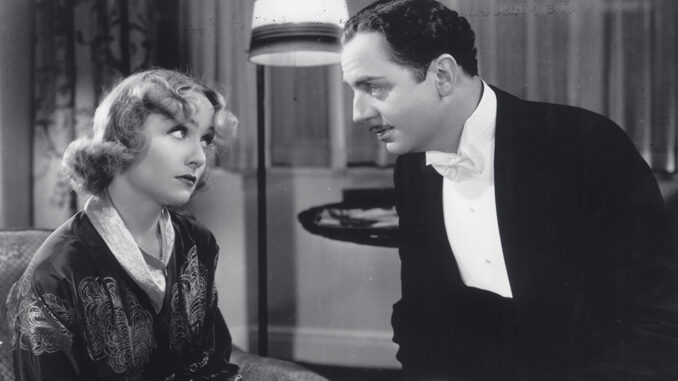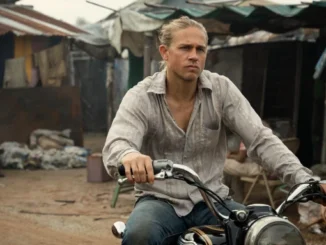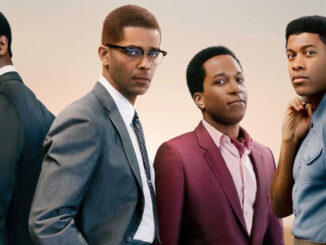
by Kevin Lewis
F Scott Fitzgerald once wrote that there are no second acts to American lives––an odd statement because Americans have always sought new challenges and adventures. During the Depression, people lost their careers, their savings and their homes, and families were forced to discover new ways to survive. Three-quarters of a century later, the current generation is experiencing similar joblessness, foreclosures and bankruptcies, which have caused national anxiety.
Seventy-five years ago, during September 1936, two of the greatest American movies were released a week apart: My Man Godfrey and Dodsworth. Audiences responded to them at the time because both Godfrey Parke and Sam Dodsworth experienced epiphanies that made them stronger, and produced jobs for those in need. These films are so modern in their outlook that today’s movie-going public seeks them out. Unlike many American movies of the Depression years (including those of Frank Capra), Godfrey and Dodsworth have actually increased in stature and popularity because they bypassed the sentimentality and coyness of the major studio narrative of the era.
Godfrey was produced by Universal, a studio that specialized in horror films and Westerns rather than comedy. Two of the most unique, popular and versatile movie stars––William Powell and Carole Lombard––were loaned to Universal from MGM and Paramount, and Godfrey was developed without studio interference or compromise. Powell gave his finest, most nuanced performance. Dodsworth was produced by the independent producer Samuel Goldwyn, who zealously protect- ed the writer’s unfettered vision. Both films explored the same theme: the corrosive and vicious character flaws that develop among immensely wealthy families.
Morrie Ryskind and Eric Hatch’s screenplay for Godfrey, from Hatch’s short story 1101 Park Avenue, portrays a ruling class that not only fails society but dehumanizes those under its care who have become homeless. The most famous scene in the movie, in which Anjelica Bullock (Alice Brady) urges her gigolo protégé (Mischa Auer in his Oscar-nominated performance) to “do the gorilla”––climbing the walls and swinging over the furniture to entertain her daughter––is still funny…and shocking. The story itself is a variation of the fairy tale The Frog Prince and the James M. Barrie play The Admirable Crichton. Like Crichton, Godfrey the butler saves the ruined family from crashing. Like the Frog Prince, the foul, derelict Godfrey reveals himself to be a prince when loved by the princess.
These films are so modern in their outlook that today’s movie-going public seeks them out.
Though Godfrey Parke and Sam Dodsworth are living in the ruins of Fitzgerald’s jazz age, they are still in the Henry James tradition of upper-class American men at odds with the sexual and moral conventions of their times and society. Playboy Godfrey (William Powell) con- templates suicide on the city dump in Manhattan because he suffers a nervous breakdown over a love affair. His blue- blood Boston family cannot deal with his mental illness. His epiphany comes when he sees once respectable and educated homeless people living in packing crates in a rapidly filling landfill underneath Sutton Place. Like them, he becomes a Forgotten Man, the press term then for the homeless.
When the posh Bullock Sisters descend on the dump to collect a forgot- ten man to win a high-society charity scavenger hunt, Godfrey pushes the contemptuous Cornelia (Gail Patrick) into the ash pile but goes with kindly but scatter- brained Irene (Carole Lombard) to become the prize item. As “Godfrey Smith,” he becomes the family butler to the Bullocks, who epitomize the irresponsible, oblivious rich. Though the nouveau riche Bullocks don’t know he is American aristocracy, and are disasters dealing with servants, Godfrey takes a newfound pride in being a good butler and teaches them how to be socially responsible people.
The Bullocks are the next stockbroker family going broke with losses in the stock market. Godfrey is able to save the family by investing the money from the sale of Cornelia’s pearls, which she has planted in his room to frame him for theft. He is also able to buy the land on the dump and build a nightclub to employ his homeless col- leagues. He has not forgotten them. “The only thing that separates a derelict from a man is a job,” he says.
Director Gregory LaCava, who was one of the finest directors of comedy in films, was famous for allowing his actors to improvise. The outtakes on the Criterion Collection DVD of Godfrey reveal much about how he achieved his effects. Lombard and Powell, once married and now divorced, use four-letter words in the takes, revealing why the finished production is so bubbly and relaxed. Ted Tetzlaff, Lombard’s favorite cinematographer, achieves deep-focus effects uncommon for the time. Interestingly, the co-editing was by Ted D. Kent, James Whale’s editor on nine films, including The Bride of Frankenstein (1935), and Russell F. Schoengarth, who later edited the innovative Peter Gunn television series.
Andrew Sarris told this writer that when he lectures on the film, women stu- dents identify more with Cornelia than Irene. Indeed, the brilliant comedienne Lombard looks more like fluff today than the patrician bitch Patrick, even though Irene develops the social conscience. “I’ve decided I don’t want to play any more games with human beings as objects,” she tells Godfrey. “It’s kind of sordid when you think of it, I mean when you think it over…” Oscar-nominated Powell’s scenes with Patrick appear more modern than those with Lombard because they are frank appraisals of the insular and vicious wealthy. When Godfrey saves the Bullocks from financial ruin, he reserves a wise lesson for the shamed Cornelia, telling her that she is a high-spirited woman who he hopes puts those high spirits to constructive uses. In real life, Patrick was unfulfilled playing patricians and, under the name Gail Patrick Jackson, became one of early television’s most successful producers with the legendary Perry Mason series (1957-66) with Raymond Burr.
Dodsworth was based on the Sinclair Lewis novel and Sidney Howard play adaptation. Lewis had mellowed from his previous novels, which had presented his character Babbitt as a symbol of self-interested and shady American business. By contrast, Dodsworth had created a quality product––the automobile––and thought of industry as a visionary component of the American dream and its workers. The play and movie starring Walter Huston concentrated more on romantic complications than industrial philosophy. Huston, the father of director/writer John Huston, radiated such natural integrity that he played Abraham Lincoln on screen for D.W. Griffith. He won the New York Film Critics Award and was nominated for the Oscar as Best Actor for Dodsworth.

With this film, William Wyler launched his legendary status as a director. The scene where Fran, in the deep-focus back- ground of the Paris hotel suite, tells off Dodsworth, in the foreground of the shot, anticipates the marital fight scene in Citizen Kane (1941). The innovative, often off-kilter cinematography by Rudolph Mate (the cinematographer of Carl Theodor Dreyer’s The Passion of Joan of Arc, 1928) and the editing by Wyler’s editor Daniel Mandell, are so dynamic that the theatrical nature of the material is minimized.
Modern audiences respond to Dodsworth because of its theme that mature people, even senior citizens, seek new challenges and careers. Long-married couples can grow apart from each other and divorce, and re-marriage is acceptable and spiritually healthy. Dodsworth (Walter Huston), who has retired and sold his automobile plant, takes his wife Fran (Ruth Chatterton) to Europe for a second honeymoon. He dis- covers that his wife, resentful at becoming a grandmother, is intent on buying her way into European society by divorcing him to marry an impoverished younger noble- man. The restless Dodsworth wants to return to America to build planes (a pre- scient choice with World War II a few years away) with an expatriate American widow (Mary Astor) who shares his visions and dreams. In his own Rhett Butler speech, he tells his first wife, “I’m going back to doing things… Love has got to stop someplace short of suicide.”
Fortunately, the Criterion Collection was courageous to restore My Man Godfrey for DVD, because the film had been previously available in inferior public domain DVD and VHS copies. Those dark copies made it appear to be a film noir rather than a screwball comedy. The superb art direction and facial expressions are vivid in the Criterion release. The two included WPA short documentaries, one revealing the actual city dump shacks on the East River with its once middle-class occupants living in packing cases, and the other showing the rich who were untouched by the Depression, reveal how accurate the film’s mise en scene was. Dodsworth, available through MGM Video, is also a superb digital transfer, illuminating Mate’s impressive cinematography and Richard Day’s Oscar-winning art direction.
Nineteen thirty-six was a pivotal year in world affairs, not unlike today’s world. Though Democratic President Franklin Delano Roosevelt was hated by the GOP, he easily won a second term in November against Republican Alfred Landon, who achieved perhaps the smallest number of votes of any presidential candidate. Why? Because FDR offered hope and jobs, which were implemented by people like Godfrey and Dodsworth, who used their expertise to create industries and businesses for people whom they did not know but did not forget.





